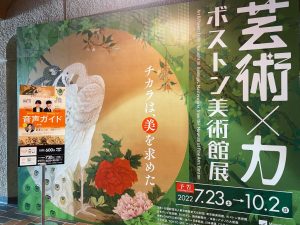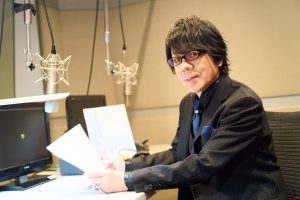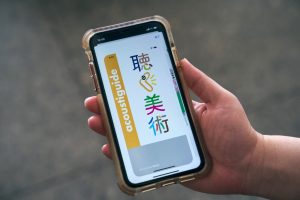The “Pompeii” exhibition was held at the Tokyo National Museum from January 14 to April 3, 2022. In its audio guide, voice actors Kensho Ono and Yuki Ono navigated the exhibition as Marcus and Liberius in the roles of two young men who meet on a street corner in Pompeii. We interviewed Yumi Fujiwara and Akane Takahashi, who were in charge of production, and Izumi Egawa, who oversaw operations at the venue, including lending the audio guidance equipment.
How are audio guides made?
Recommending Audio Guide Use
No.001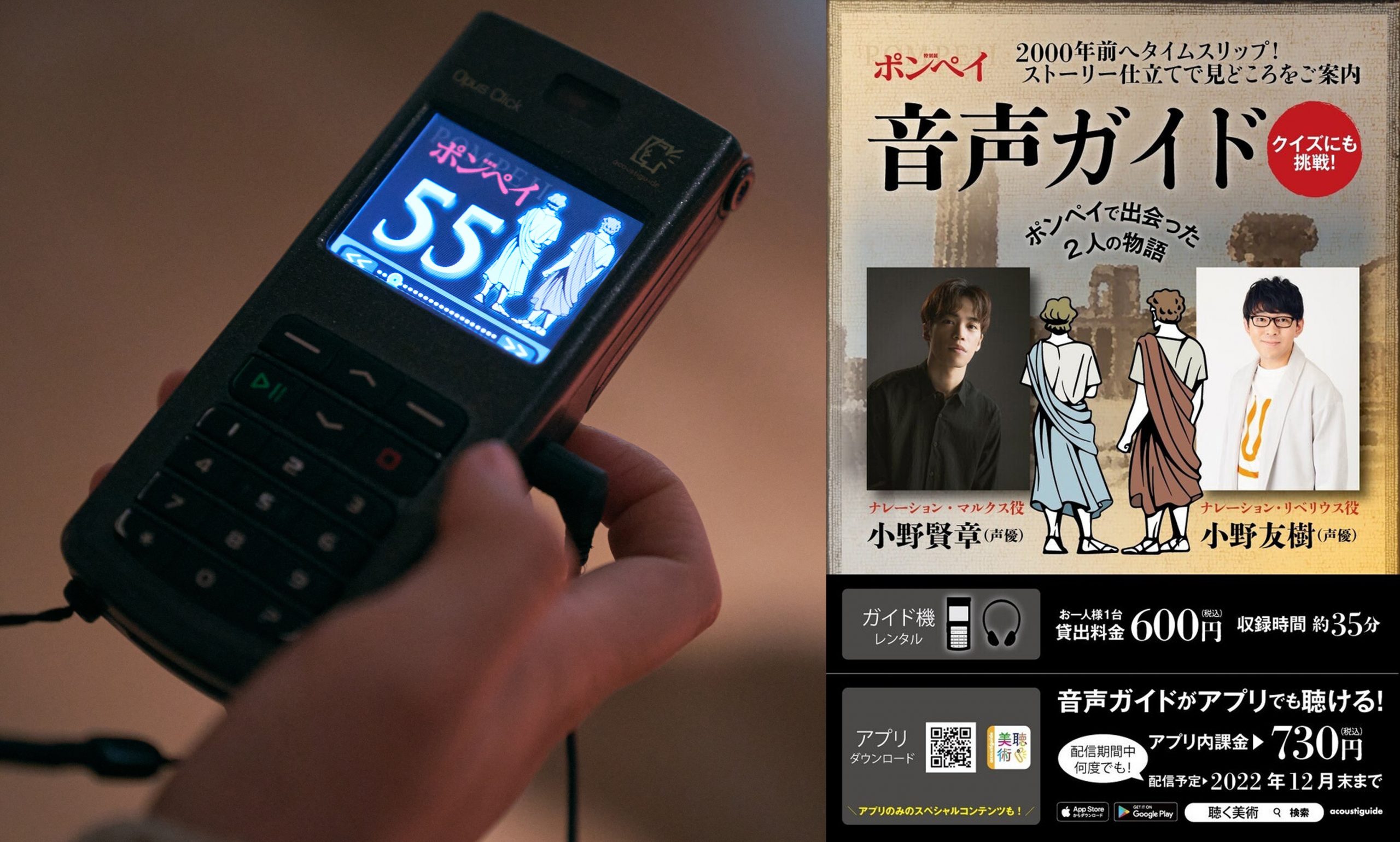
Audio guides have become a standard feature of art galleries and museums. They make the viewing experience more extravagant and enriching. The devices have become increasingly advanced and popular, with the development of applications that feature popular narrators and actors, allowing viewers to listen to guides without having to visit exhibition venues.
In a new series of columns, “Recommending Audio Guide Use,” we will interview audio guide producers and others to delve into how to enjoy “listening” to art. For the first installment, we asked Acoustiguide Japan Ltd., which produces nearly 50 audio guides a year, about how they make their guides and what goes on behind the scenes in their production.
Enjoying Works by Ear
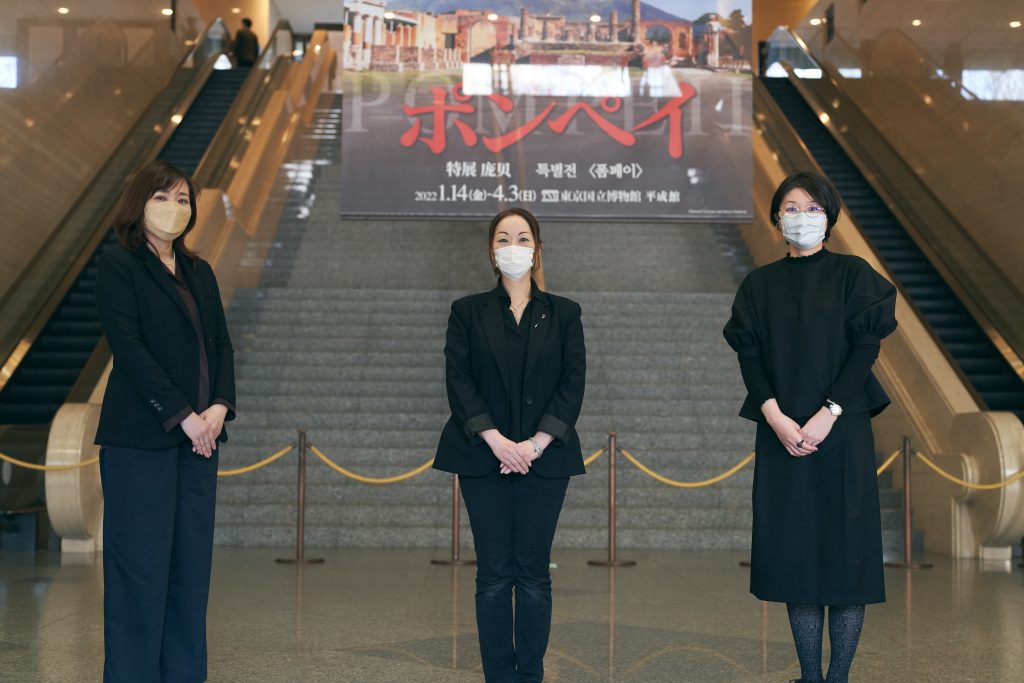
The two voice actors played the roles of young people of the time. The setting of the exhibition, where they traveled around the city of Pompeii 2,000 years ago, allowed the audience to easily enter the world portrayed in the exhibition. Using this audio guide as an example, we would like to ask you about the production process. What kind of team do you work with?
Yumi Fujiwara: At our company, one staff member is mainly in charge of everything from manuscript production to voice recording. For this Pompeii exhibition, Akane Takahashi was in charge.
Akane Takahashi: We receive job requests about three to four months before the exhibitions open, and then we plan in consultation with the organizer on what kind of guide we will provide and who will narrate the exhibition. For the “Pompeii” exhibition, we worked out a plan with researchers from the Tokyo National Museum, the Asahi Shimbun, NHK Promotions, and others.
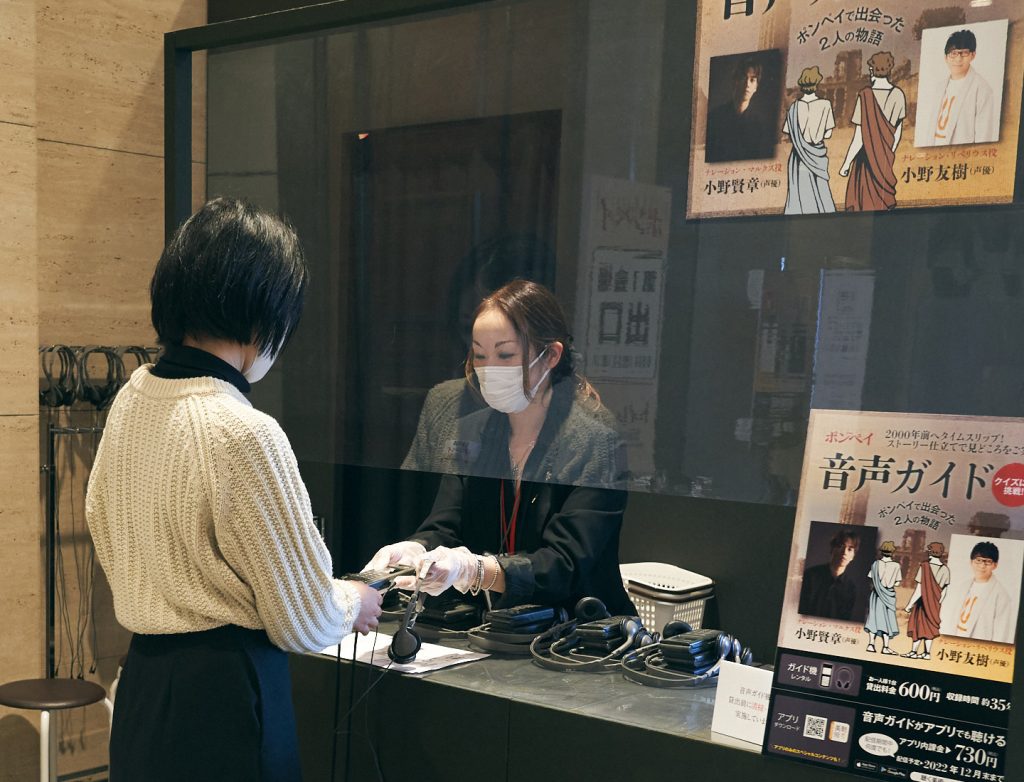
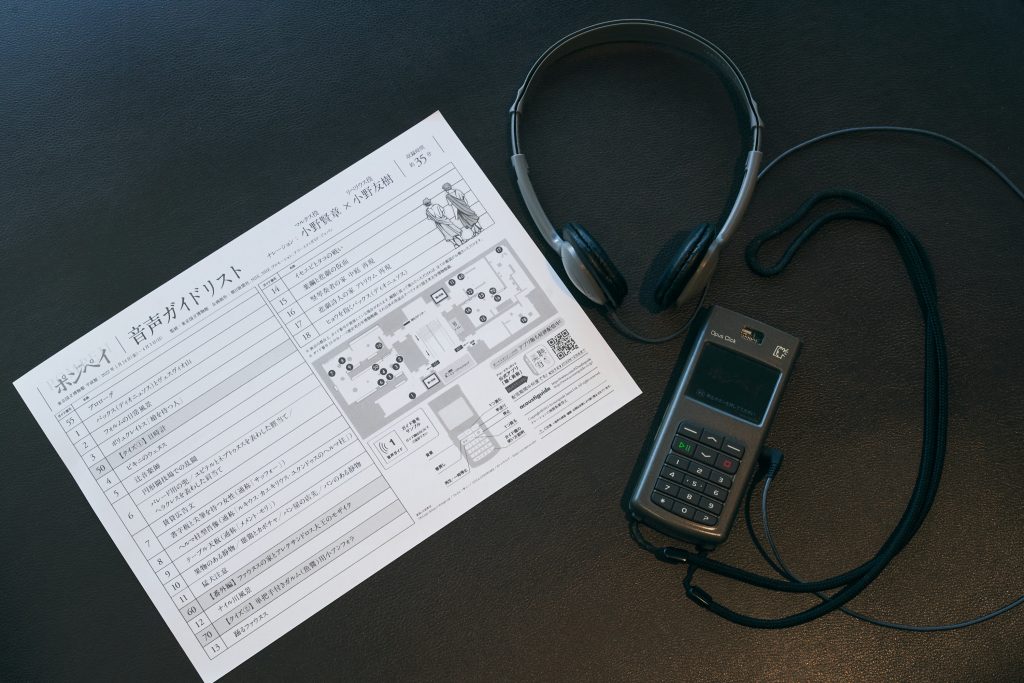
This time, the commentary was for about 20 works, totaling about 35 minutes in length. I was surprised by the short period it took to complete the work.
Takahashi: Audio guides are an integral part of the exhibition, but we cannot start working until the theme and highlights of the exhibition have been established to some extent. We often start as early as six months to three months before an exhibition’s opening.
How do you decide on a narrator?
Takahashi: We want to use narrators who have some connection to the exhibition theme. In this case, we had a plan at the beginning to create a story-based production and to make the two characters stand out. We then worked with the organizers to decide who to ask to narrate the event. Kensho Ono had appeared in a stage performance set in Pompeii in the past. Also, because the characters were set to interact with each other as good friends, we asked Yuki Ono to join, as the two have worked several times before. We have been working on scripts with specific narrators in mind more than we did before.
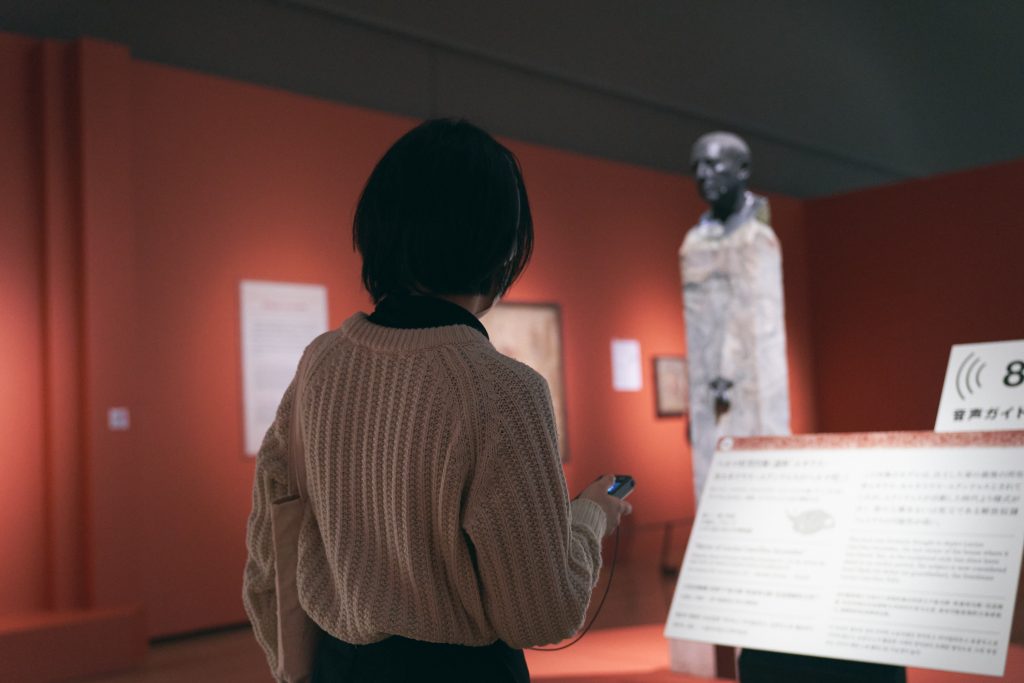
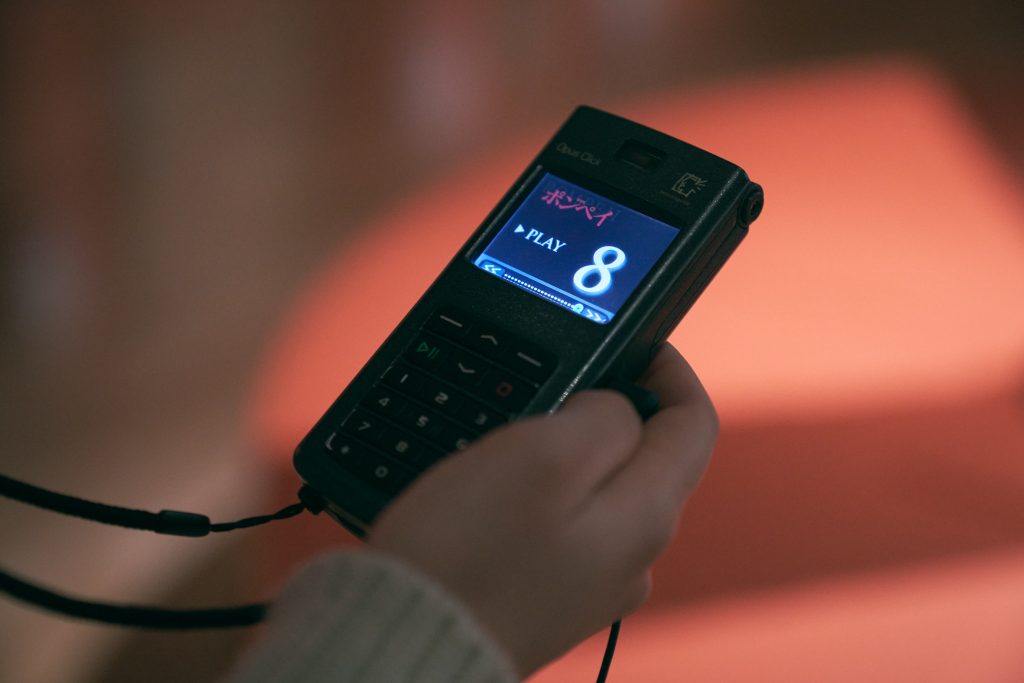
Creating content that reaches the ears, not the eyes
From there, you create the structure and script. Do you use the manuscripts in the catalogs and descriptions of works in the exhibition as the basis of your work?
Takahashi: While we refer to catalogs and artwork descriptions, we also incorporate information based on our own research to ensure that our creations are not exactly the same. This is about two to three months before the opening of the exhibition. The base of the manuscript is drafted by a writer who is familiar with the exhibition’s field. From there, the content is refined and adjusted to make it more substantial by adding more detail and referencing literature. The completed manuscript is proofread and prepared by researchers in the museum and the exhibition’s supervisor.
Whether an artwork is complemented with an audio guide depends on the layout of the exhibition venue and flow line, right?
Takahashi: Usually, researchers in charge of exhibitions or organizers select the works to be guided, but we sometimes make our own suggestions. Quizzes related to works are often included in guides. For the “Pompeii” exhibition, researchers in the Tokyo National Museum came up with the idea.
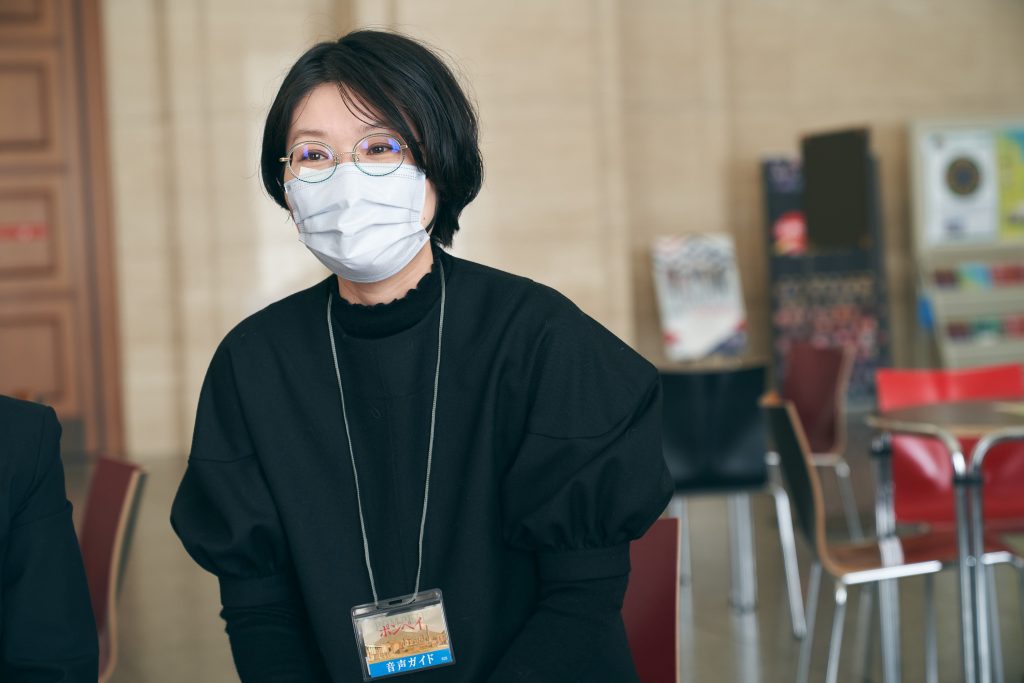
Is there anything you keep in mind when creating scripts? Each commentary in the “Pompeii” exhibition was put together in a straightforward manner, making it easy to understand even difficult content.
Takahashi: I think the points to pay attention to are quite different from those in manuscripts read as text. We avoid using homonyms that sound the same by ear, and try to use words that are as familiar as possible. It is difficult to understand if the subject has many modifiers, I separate them so they are not too long. I also pay attention to the rhythm when the text is read out loud.
When the script is ready and narration recorded, do you make adjustments onsite?
Takahashi: When the narrator actually reads the script, we sometimes make adjustments onsite if the mood or timing of their voice does not match the script.
The audio guide also includes music and sound effects, which completely immerse me in that world. Are these sounds added after the narration is recorded?
Fujiwara: We call the editing of sound and insertion of music the “mixing process,” which usually takes place a few weeks before the exhibition’s opening . We also work to accommodate changes in exhibition content during set-up. We make detailed adjustments to the timing of the background music and sound effects, pauses, audio volume, etc.
After the mixing process, the audio guide is finally completed.
Izumi Egawa: The final check is done at the exhibition site. We check the numbers on the audio guide and the artwork numbers to make sure there are no discrepancies. This procedure is usually done at the exhibition’s preview or the day before.
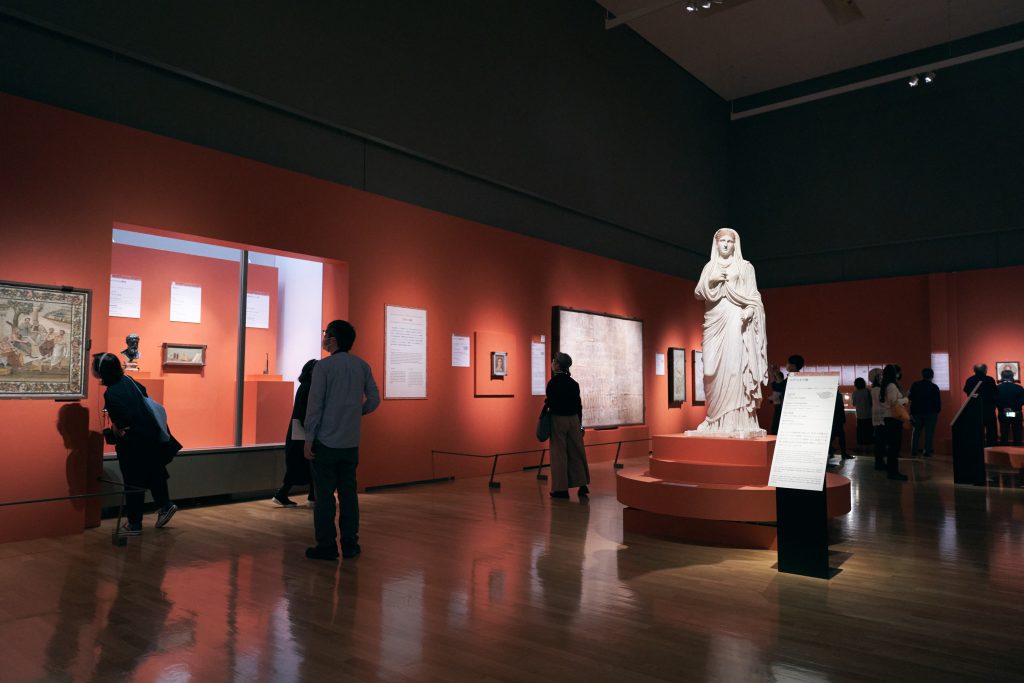
Enhancing the enjoyment of an exhibition
Has COVID-19 forced any changes in how audio guides are used?
Egawa: Before COVID-19, many people visited both the museum and the zoo in Ueno, or in Roppongi, people would stop by museums on their way to shopping. However, since the number of visitors to each exhibition is limited by COVID-19 and reservations are required to be made in advance, many visitors come solely for the exhibitions. People enjoy one exhibition while listening to the audio guide and then buy goods or have a cup of tea afterward. It seems that more and more visitors spend a whole day relaxing at the museum.
I would like to ask you about the best part of your job of overseeing production. Are there any guides that you have worked on and then left a particularly strong impression?
Fujiwara: I like to plan what kind of content would be interesting. For the “Mummies of Ancient Egypt: Rediscovering Six Lives” (2021-22), under the theme of “six stories unraveled from six mummies,” I enjoyed searching for ethnic sounds that fit each story and thinking about how to direct the narration. Audience members vary a lot depending on venues and exhibitions. We try to imagine what kind of people will be listening to our audio guides and try to match that to the characteristics of each exhibition.
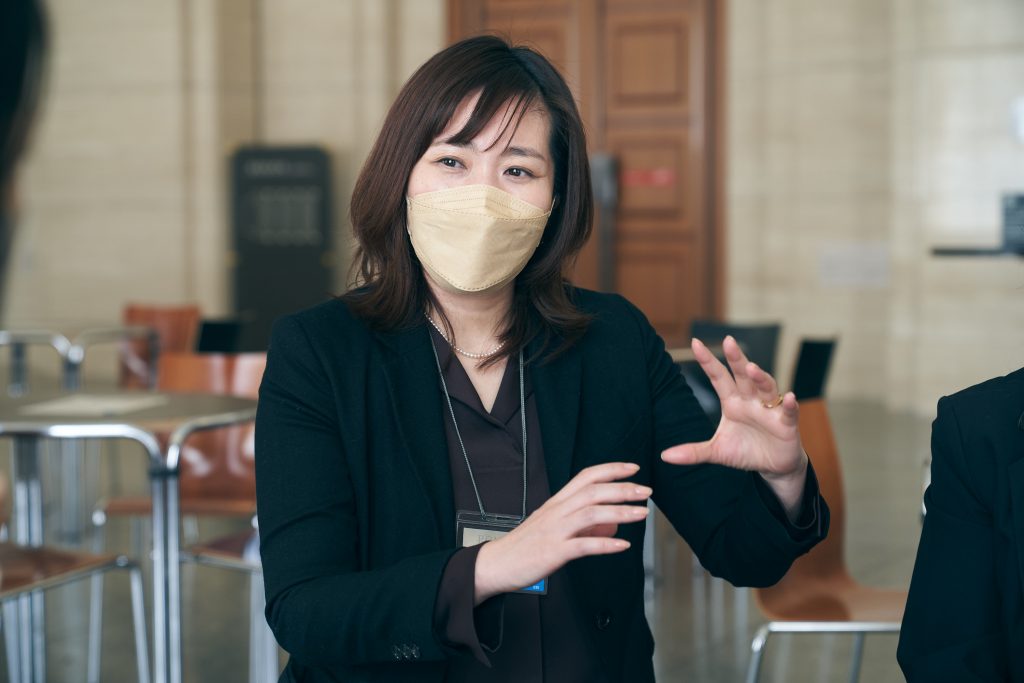
You deal with various fields such as history, science, art, and subcultures, don’t you? Are there times when staff members are assigned certain events based on their fields of specialty?
Fujiwara: We take advantage of our staff’s areas of expertise, but we do not necessarily divide them by their expertise. Some of exhibitions I have recently worked on include “Harry Potter: A History of Magic” exhibition (2021-22) and “Chronicles of the Warriors: Japanese Swords x Ukiyo-e from the Museum of Fine Arts, Boston” (2022), among others: a variety of genres.
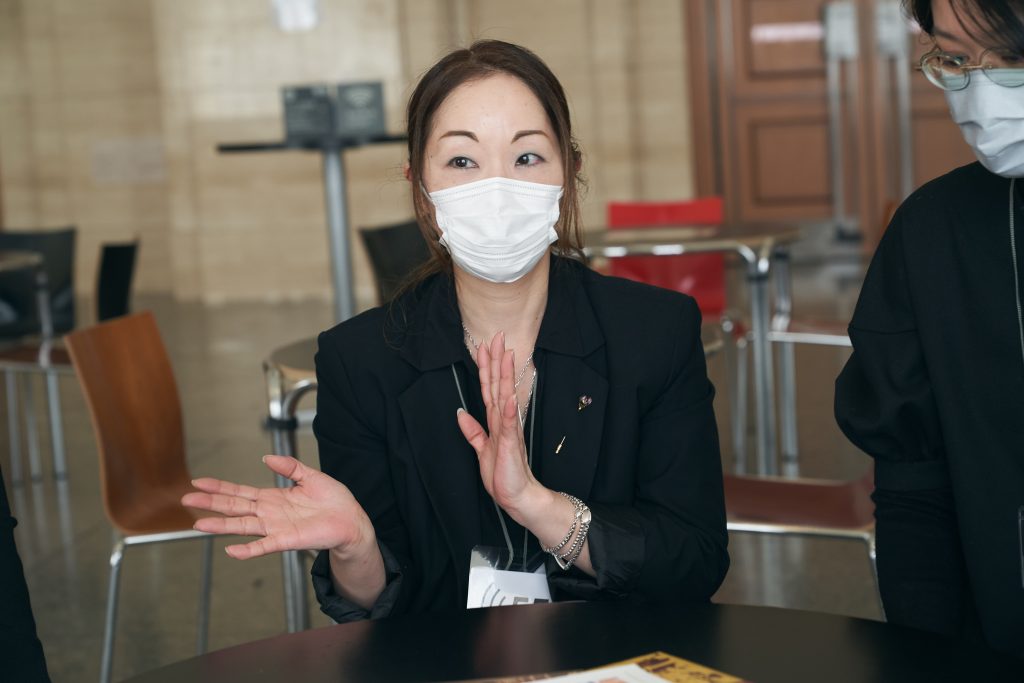
How about Ms. Egawa and Ms. Takahashi?
Egawa: I am in charge of equipment rental and operation and visiting various venues, not only in Tokyo, at intervals of two or three months. As Fujiwara mentioned earlier, the clientele changes depending on the exhibition. It is very enjoyable to be in contact with a variety of people on a daily basis.
Takahashi: I am happy when a script I create is voiced. The “Pompeii” exhibition is a big production that includes setting up characters. But there are people who prefer an orthodox style of explaining works in a straightforward manner, and their needs vary. The previous exhibition I oversaw, “National Treasure: Flocking Animals” (2021), was a conversational guide between a navigator and another character, which was enjoyed by older visitors too. While I want to make sure that the guide is not difficult, I hope to convey information and the background of works properly, rather than relying solely on rendering the production.
Fujiwara: For those who cannot come to the exhibition or want to enjoy it after they return home, we have also prepared an app called “kiku bijutsu”(Listen to Art). In addition to the guides that can be heard at the exhibition venue, the “Pompeii” exhibition, for example, offers a bonus track with a side story about the characters. The works are displayed on the screen. We hope people enjoy the exhibition no matter where they are. COVID-19 has caused some difficulties, but it has also created new ways of enjoying the exhibition.
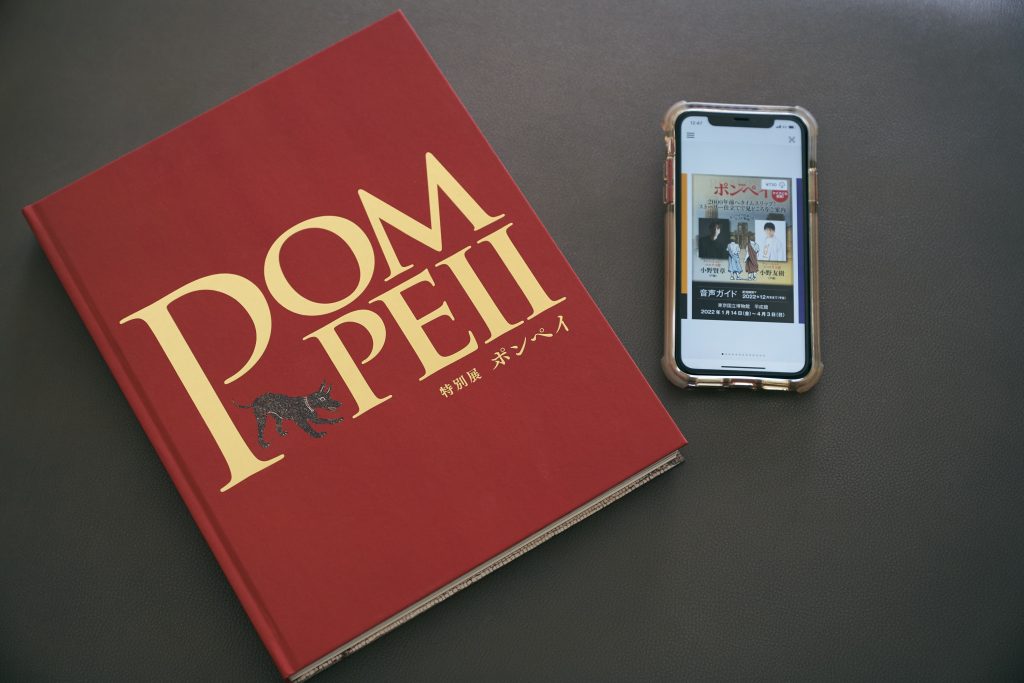
Text: Emi Sato
Photo: Sachiko Saito
Translation: Kae Shigeno
Acoustiguide Japan, Ltd.
Established in 1999. Japan branch of Acoustiguide, a company founded in the United States in 1957 that produces audio and multimedia guides.
https://www.acoustiguide.co.jp/company/profile_english.html


